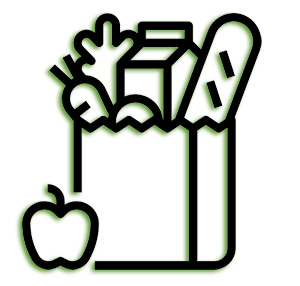
23 Oct THE BEST GROCERY LIST FOR HEALTHY EATING
Setting yourself up for success is one of the best ways to meet your weight loss goals. One big part of that is having the healthy foods you should be eating on hand so you are not tempted to go off your plan when hunger strikes.
What should be on your grocery list for healthy eating will vary depending on your personal preferences and the trigger foods you should avoid. But in general, I recommend having the following foods on your shopping list:
Fresh produce: Stocking up on the freshest seasonal produce you can find should be at the top of your list. Shop organic or at a farmer’s market if you can for the freshest and healthiest selection. In spring, think of assorted greens for eating fresh and wilted. In summer, take advantage of seasonal beans, zucchini, cucumbers, and tomatoes. During fall, seek out squashes, and in winter root vegetables such as parsnips, onions, and carrots take center stage. Add seasonal fruit to your list as well, but remember to count calories fruit can add up, so pay attention to portions.
Lean Protein: Lean protein is another important item on your grocery list because getting enough lean protein helps your body preserve muscle while losing fat. Swap red meat for low-fat seafood and poultry and be sure to take advantage of vegetarian options too. Tofu, eggs, and beans are all great low-calorie protein sources. Add them to your plan in place of meat several times per week.
Low-Fat Dairy: For some, dairy products like milk and cheese are trigger foods, and in this case should be omitted from the diet. However when eaten in moderation, low-fat dairy can be part of a healthy shopping list. Creative swaps (substituting plain non-fat yogurt for sour cream, for example) can help you feel like you are indulging without the calories and full-fat dairy. Despite marketing campaigns to the contrary, adults really don’t need dairy in their diets and can get the calcium their bodies need from other sources. Don’t be afraid to explore all the dairy alternatives available. Many have twice the calcium as cow’s milk and taste just as good (or better!)
Whole Grains: Clever marketing has convinced most Americans that white bread, white rice, and regular pasta are better, but in reality, these highly processed grains contain little nutritional value or filling fiber. Reach for the less processed options instead 100% whole grain bread, brown rice, and whole grain pasta. Be sure to read packages and measure out recommended servings until you get used to what one portion means, grains can contain a surprising amount of calories in a small serving.
Frozen Veggies and Fruit: Be sure to pick up some frozen veggies and fruit for those days you run short on fresh items. Many people who aren’t used to eating a lot of produce report that it often goes to waste before they can eat it. Frozen veggies and fruit have basically the same nutritional value (far more than canned in most cases) and don’t go to waste. When fresh produce isn’t in season, frozen items make a great substitute.
Ethnic Cuisines: There’s a whole world of healthy food choices waiting for you outside your local supermarket. If you have an Asian grocer near you, the selection of fresh veggies for stir-fry, and other low-cal, high-nutrition items can’t be beat. Prices are often lower than a traditional grocery store as well. Variety is the spice of life and it certainly makes following a weight loss plan easier.
In summary, the best grocery list should contain food as close to its natural form as you can. Avoid shopping the center aisles in the store where most of the processed foods are lurking and choosing healthy foods will get a whole lot easier!


